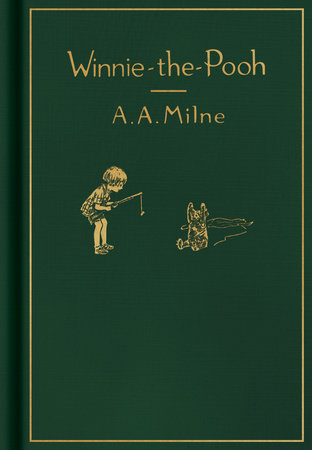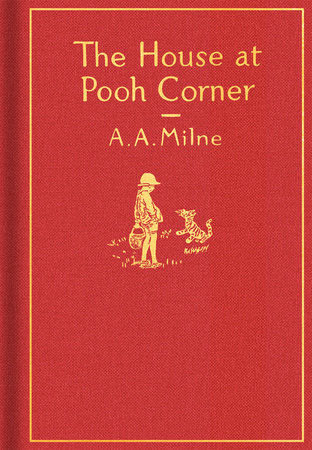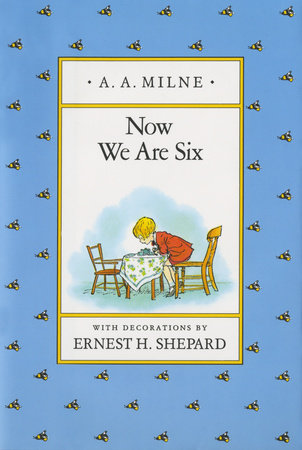My Path to the Hundred Acre Wood and the World of Winnie-the-Pooh
by Melissa Taylor
Of all the books in the world, I bet you’d never guess which one my mom banned at home. It was arguably one of the most beloved storybooks of all time. It was Winnie-the-Pooh. Yes, you read that correctly. My Ph.D. parents claimed that Pooh “glorified stupidity” and forbade me from reading it.
Which meant that reading Winnie-the-Pooh became an act of rebellion for me.
I bought that little peach-colored hardback book covered in honeybees and carefully hid it inside the box-spring of my bed (along with a few wine coolers and a pack of cigarettes) in my upstairs pink bedroom. I was 16. Too old to hide a children’s storybook yet just the right age to discover that you are never too old for a book like Winnie-the-Pooh.
It was months before I read it (being Subversive didn’t come easily) but when I finally did, I discovered the accuracy of what C. S. Lewis so famously said: “A children’s story that can only be enjoyed by children is not a good children’s story in the slightest.” I found that A. A. Milne’s book series was indeed meant for kids. It was also meant for rebellious teenagers. And adults.
Once I opened the book, the world of Pooh, which bore no resemblance to my own life, invited me in. The smell of pine, the stream’s stepping stones, the branches of a large oak tree, thistly corners of the forest … It was a world where friendship, kindness, acceptance, imagination, and all ways of being were celebrated.
I wanted to live there.
As I sat in my family’s four-bedroom suburban home in Denver and read about the Hundred Acre Wood, I began to understand that while my parents valued Knowing Important Things and Perfection and People Like Them, I didn’t. I valued the things A.A. Milne did. What I wanted in my life from that moment forward was exactly what I was reading in those stories with the loving parental figure of Christopher Robin and his quirky friends — Pooh, Piglet, Eeyore, Kanga, Roo, Owl, Rabbit, and Tigger.
I noticed a pulsing heartbeat of kindness in the Winnie-the-Pooh books. Pooh and Piglet gave birthday gifts to Eeyore to cheer him up. Christopher Robin came to the rescue when Pooh and Piglet were stuck in a pit. Kanga invited Tigger to live at her house. It seemed idyllic. A safe place to visit for both children and us Not-Children-Anymore. Because kindness felt safe.
Acceptance felt safe, too. It didn’t matter if Eeyore was bitter or Rabbit was jealous or Tigger was bouncy or Piglet was anxious, the Hundred Acre Wood was a space where each of the friends and their unique ways of being had a place and a value. I stretched back on my bed, letting this truth simmer in my mind. It would become a well-worn Touchstone moment. What if people were all seen for who they were and accepted? What if Winnie-the-Pooh was a role model for us all?
And there was even more to love about the Hundred Acre Woods — the playfulness, creativity, and humor! The characters’ wacky, confusing conversations always put a smile on my face. Did they make no sense or actually make All the Sense? Take, for example, this interaction between Tigger and Roo in The House at Pooh Corner:
“‘But we mustn’t stop now, or we shall be late.’
‘Late for what?’
‘For whatever we want to be in time for,’ said Tigger hurrying on.”
I had babysat enough kids to recognize the funny sort of truthful logic that only made sense to children. In this instance, Tigger simply didn’t want to be late for what he didn’t want to be late for. It initially made me say, “Huh?” Then I wondered if this was this the essence of a child’s perspective — a playful, circular reasoning. It made me wonder how much I’d lost while Growing Up and Trying to Know Things. Until I realized that maybe Winnie-the-Pooh was just what I needed to discover my own Funny and Weird and Kid-Like Self.
In contrast to my own grim, try-to-survive-life teenage outlook, I adored Pooh’s ability to spontaneously and cheerfully invent songs and poems about whatever was happening in life, like this one from The House at Pooh Corner: “I could spend a happy morning / Seeing Roo, / I could spend a happy morning / Being Pooh.” What if I could notice life with such joyous abandon, I wondered — so much so that I created art? Pooh once told Piglet, “It is the best way to write poetry, letting things come.” I wanted to let poetry come…
Of course, at the time I didn’t know that one day I’d become a writer, but even then, I loved the charming way Milne constructed his books with run-on sentences, puns, and Unusual Capitalizations. It created an atmosphere of its own — quirky and lovable just like the stories. This line from Winnie-the-Pooh captured just how fun and effective language could be: “Christopher Robin was sitting outside his door, putting on his Big Boots. As soon as he saw the Big Boots, Pooh knew that an Adventure was going to happen…”
Much later in life, I’d think about my favorite authors and books I wanted to read again and again, and I’d always think of A. A. Milne and his playful and fun-spirited prose. Although I discovered him after my own childhood, Milne’s Winnie-the-Pooh stories, imagined from the adventures of a boy and his plush toys, would continue to represent for me the best of children’s literature with their life-giving meaning, captivating stories, and brilliant writing.
My mom was wrong. Pooh was never stupid. He was Wise and Kind. And that is exactly who I wanted to be. And what I hoped — still hope — the world would one day be.
-
Get the Books:
-




